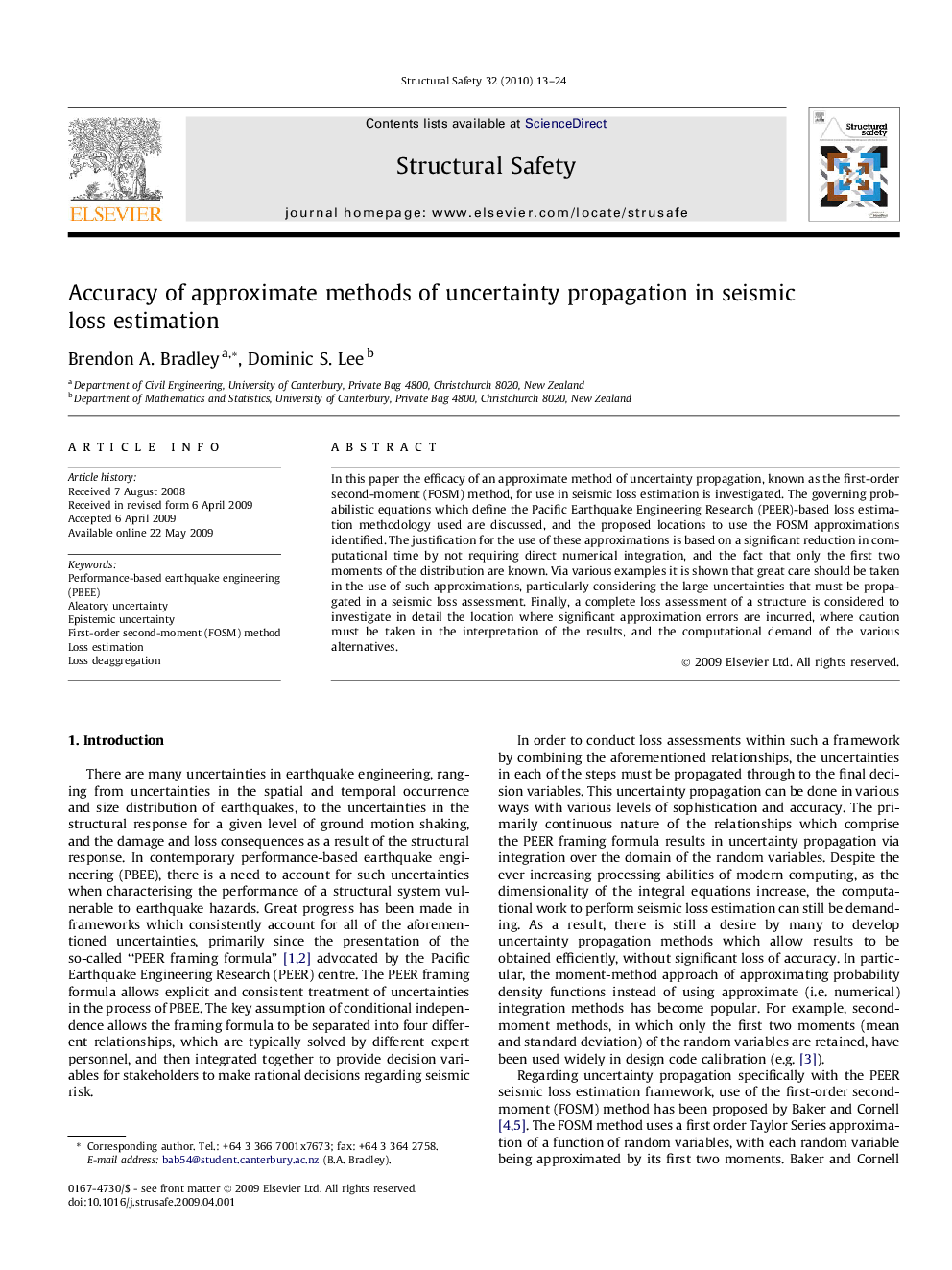| Article ID | Journal | Published Year | Pages | File Type |
|---|---|---|---|---|
| 307827 | Structural Safety | 2010 | 12 Pages |
In this paper the efficacy of an approximate method of uncertainty propagation, known as the first-order second-moment (FOSM) method, for use in seismic loss estimation is investigated. The governing probabilistic equations which define the Pacific Earthquake Engineering Research (PEER)-based loss estimation methodology used are discussed, and the proposed locations to use the FOSM approximations identified. The justification for the use of these approximations is based on a significant reduction in computational time by not requiring direct numerical integration, and the fact that only the first two moments of the distribution are known. Via various examples it is shown that great care should be taken in the use of such approximations, particularly considering the large uncertainties that must be propagated in a seismic loss assessment. Finally, a complete loss assessment of a structure is considered to investigate in detail the location where significant approximation errors are incurred, where caution must be taken in the interpretation of the results, and the computational demand of the various alternatives.
